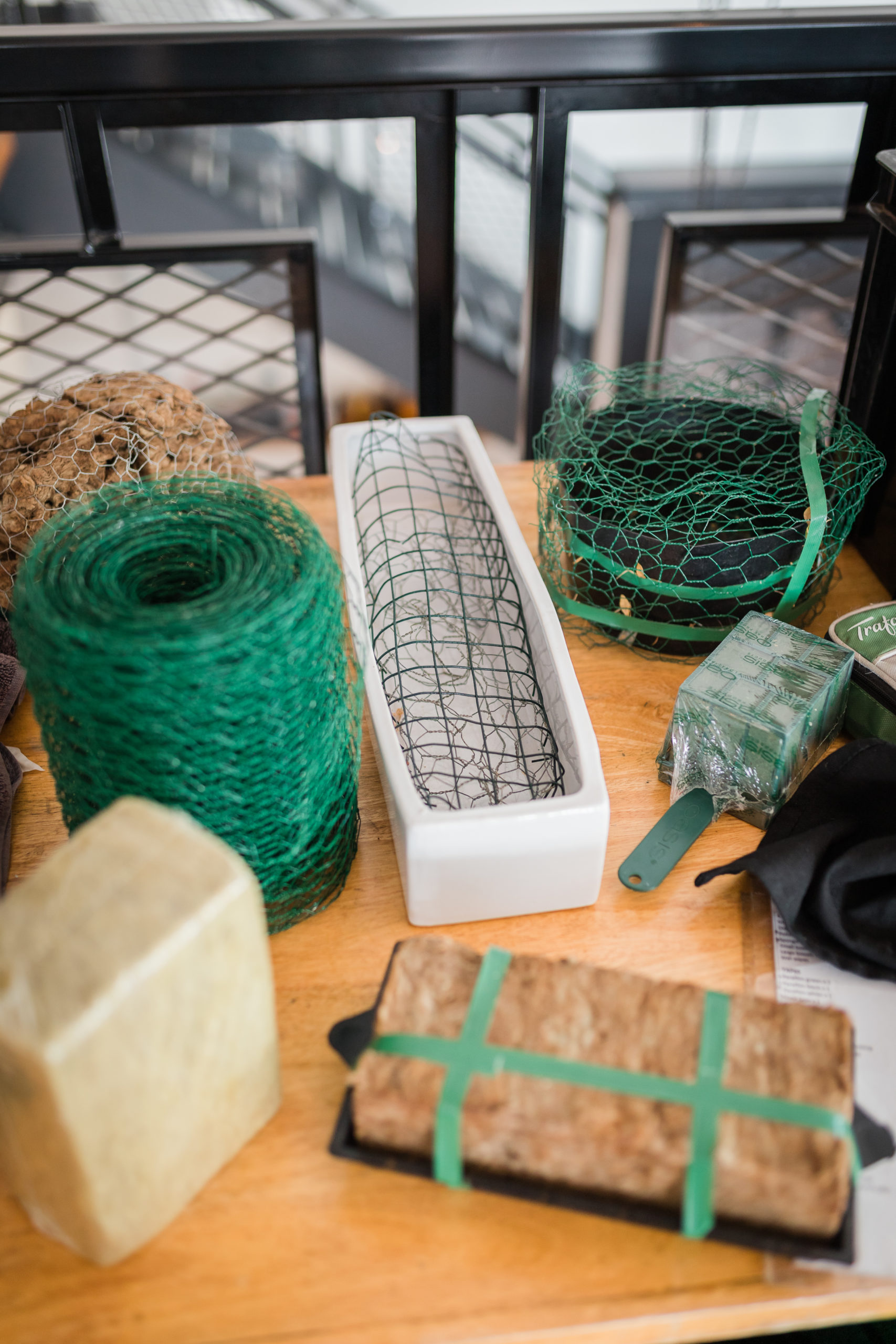Blog
What’s the deal with floral foam?

Floral foam has been a source of contention for the floristry industry of late.
These green, sponge-like foam blocks are an easy way to arrange flowers and keep them hydrated with very little mess. In more recent years it’s also become popular on social media ASMR videos because of the satisfying crunching sound it makes when you crush it.
Unfortunately the ease of floral foam comes at a high cost to the environment, with researchers finding that it is contributing to microplastic pollution in our oceans, and the toxic chemicals used to make it are harming the sea animals who consume it.
What is floral foam?
Just about any florist in the industry today will have used floral foam at some point in their career, if not every day.
Floral foam was invented by Smithers-Oasis in the 1950s in the U.S. and quickly became the material of choice for floral arrangements. It’s lightweight, easy to cut and mould, and is able to hold up to 50 times its own weight in water. Floral foam is relatively cheap too, making it all the more appealing to florists just getting started in their businesses.
Floral foam became the catalyst for more complicated floristry designs, opening up a new world of possibilities for floral designers. Suddenly, they could create hanging installations, arches, table centrepieces and other large designs with relative ease.
What is floral foam made of?
The unfortunate truth of floral foam is that it’s made of plastic.
Specifically, a type of plastic similar to house insulation foam known as phenol formaldehydes. These were the first plastics to be developed in the early 1900s.
To get into the science-y bit, floral foam is made using phenol, formaldehyde polymers, surfactants, and wetting agents. Both phenol and formaldehyde are considered to be hazardous chemicals as well as carcinogens, however, they are mixed with non-hazardous substances to form floral foam.
Is floral foam toxic?
Short answer, no. Long answer, kind of.
While floral foam can cause eye, skin and respiratory tract irritation, it is not considered toxic when handled under normal conditions. This is because the toxic chemicals found in your standard block of foam are present in very low concentrations.
However, while it may not be toxic to a florist who is handling it semi-regularly, a recent study found that the toxins are causing problems for the sea animals who are ingesting them as microplastics.
This study also showed that the toxic phenols were able to separate from the floral foam into the water, which means that sea animals are swimming around in water that contains toxins and microplastic floral foam particles.
What is floral foam’s effect on the environment?
This same study from RMIT University completed tests on invertebrates that consumed floral foam. What they found was that the species displayed signs of toxicity upon ingestion. The study also noted that, ‘Biofoam microplastics leached more than twice as much phenolic compounds than regular foam microplastics.’ This means the microplastics leaching out of floral foam are doing more damage to our sea life than any other foam microplastics.
While research has not yet been carried out on the effects of foam microplastics in larger sea species, it’s already a widely known fact that most sea life contains microplastics. A comparison study done by the University of Adelaide on microplastics in fish in Australia and Fiji found that, ‘In Australia, plastic was found in 61.6% of fish gastrointestinal tracts, while in Fiji, 35.3% of fish had plastic.’ If we’re already ingesting microplastics from the fish we eat, it’s not a stretch to assume we have already or will eventually be ingesting toxic phenols from floral foam in our seafood too.
Rita Feldmann, founder of the Sustainable Floristry Network is quoted as saying, “For an industry that seeks to celebrate nature, we are actually adding to environmental problems when using this product,” when talking about floral foam. It’s hoped that the scientific findings will discourage florists across the globe from turning to floral foam, opting instead for more sustainable methods of arranging.
But it’s not just florists who are flushing their fair share of foam down the drain––floral foam has recently gained popularity on social media in ASMR (Autonomous sensory meridian response) videos. The highly satisfying, crisp sound it makes as it’s crushed has people flocking to these videos for that ASMR scalp tingling sensation. And, to top it all off, some creators will even add glitter (another microplastic) to the foam, before washing it all down the sink.
Even if floral foam is disposed of in the bin, it goes to land-fill where it won’t break down and can’t be composted, just continuing to leak toxins into the environment.
What can I do about it?
The simplest way you can make a difference when it comes to floral foam is to stop using it.
While it can seem intimidating initially to forgo a material that’s been vital to your arrangements for as long as you’ve been in floristry, there are a lot of really good alternatives out there.
We actually put together a list of floral foam alternatives that you can check out here.
Another great way to help out in the sustainable floristry space is to educate yourself and start filling up your online space with like-minded, sustainable florists. Some great accounts to follow on Instagram are:
- @nofloralfoam – focused on raising awareness about plastic floral foam and alternative floristry techniques
- @sustainablefloristry – connecting sustainable florists and growers in Australia
- @newagefloral – focused on providing sustainable alternatives for florists
If you want to learn more about incorporating sustainable practices into your floristry, our sister school, Thrive Flower School, is running a bunch of courses that teach sustainable floristry techniques as well as how to implement them in your business. We’d love to see you there!